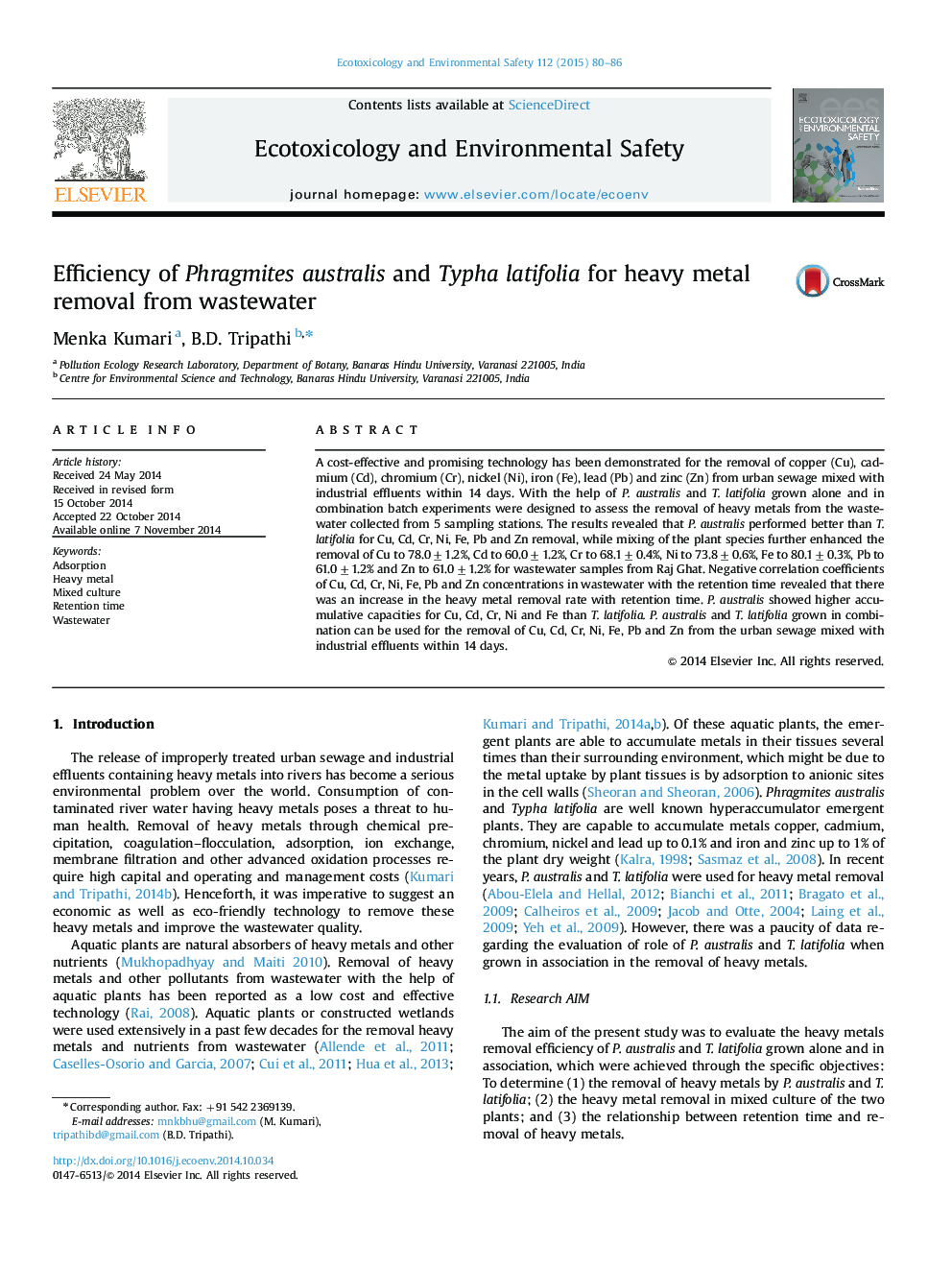| کد مقاله | کد نشریه | سال انتشار | مقاله انگلیسی | نسخه تمام متن |
|---|---|---|---|---|
| 4419791 | 1618951 | 2015 | 7 صفحه PDF | دانلود رایگان |

• Combination of Phragmites australis and Typha latifolia increased heavy metal removal.
• Heavy metal removal increased with retention time.
• Removal of heavy metal increased with their initial concentration in wastewater.
• Phragmites australis showed higher accumulative capacities for Cu, Cd, Cr, Ni and Fe.
A cost-effective and promising technology has been demonstrated for the removal of copper (Cu), cadmium (Cd), chromium (Cr), nickel (Ni), iron (Fe), lead (Pb) and zinc (Zn) from urban sewage mixed with industrial effluents within 14 days. With the help of P. australis and T. latifolia grown alone and in combination batch experiments were designed to assess the removal of heavy metals from the wastewater collected from 5 sampling stations. The results revealed that P. australis performed better than T. latifolia for Cu, Cd, Cr, Ni, Fe, Pb and Zn removal, while mixing of the plant species further enhanced the removal of Cu to 78.0±1.2%, Cd to 60.0±1.2%, Cr to 68.1±0.4%, Ni to 73.8±0.6%, Fe to 80.1±0.3%, Pb to 61.0±1.2% and Zn to 61.0±1.2% for wastewater samples from Raj Ghat. Negative correlation coefficients of Cu, Cd, Cr, Ni, Fe, Pb and Zn concentrations in wastewater with the retention time revealed that there was an increase in the heavy metal removal rate with retention time. P. australis showed higher accumulative capacities for Cu, Cd, Cr, Ni and Fe than T. latifolia. P. australis and T. latifolia grown in combination can be used for the removal of Cu, Cd, Cr, Ni, Fe, Pb and Zn from the urban sewage mixed with industrial effluents within 14 days.
Journal: Ecotoxicology and Environmental Safety - Volume 112, February 2015, Pages 80–86